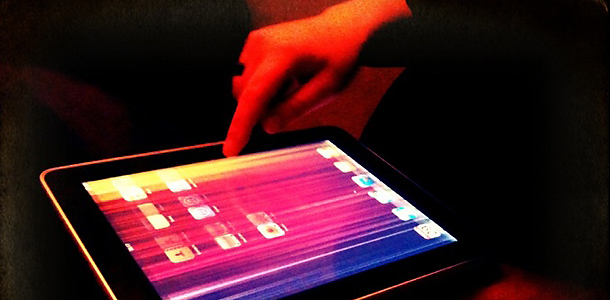
We're expecting Apple to arrive with a shiny new iPad 3 sometime early in 2012, and we think we know a few things about it. For starters it will have a faster A6 dual-core CPU, better cameras, and a screen that's rumored to have twice as many pixels in each direction as the current one.
But now there's a fresh rumor that Apple's going to partner it with a "mini" iPad, and this time it's not a reiteration of the old 7-inch iPad myth from before: Now folks are saying Apple's got an iPad "lite" en route, much as it was rumored to have two iPhones due this month--one a new design, the other a re-engineered cheaper model. With the arrival of the Amazon Kindle Fire and its commanding low-price point certain to energize the market, Apple certainly could benefit from this idea. But it's not as simple as that.
Let's start with some common sense: The iPad has a commanding lead in the market it helped create. Current figures show it as holding 68% market share, and recent data showed the iPad has over 97% of mobile traffic from tablets, and has overtaken the iPhone for the title of heaviest data traffic from a mobile device. Even with a lot of promising Android Honeycomb-powered tablets arriving over the course of the year, particularly from arch rival Samsung, Apple's device isn't taking much of a hit. A cliche perhaps but also true: if it ain't broke, don't fix it. Which means Apple probably won't mess with the general design of its device too much, either in terms of hardware or software.
The iPad 3 we're expecting, courtesy of numerous leaks within Apple's supply chain, embodies this with incremental adjustments. It'll possibly be a hair thinner. It'll probably have equal or slightly better battery life despite delivering significantly better performance. Odds are Apple will beef-up the cameras built into it-- at least the rear-facing one--to match the current iPhone 4's one or the new iPhone 4S's unit. And then there's a significant body of data saying Apple will quadruple the number of pixels on the screen. If all this comes true, then the device will be another market leader, with the screen alone surpassing every other unit we've heard of...and delivering a clarity of image that could even make it a better contender for e-reading than Amazon's units. As such, it will sell by the tens of million. So why would Apple bother to design a cheaper companion?
It probably won't. What may happen is that Apple will follow its iPhone business model, and elect to retain the iPad 2 for sale alongside the iPad 3. This makes good sense for a number of reasons, starting with production. After a few false starts, the iPad 2 production line is now running as smoothly as possible, and Apple and its partners will have been able to make incremental changes to significantly lower the cost of manufacture--thus increasing profits. If you can keep that system ticking over for longer, then you're on a road to ever-more-increasing profitability from a strong, consumer-desirable product.
Apple could try the same thing it's done with the iPhone 4 this year, adding an additional unit with reduced internal storage and a lower price point (to tackle the mid-price ragion of the market and the pre-pay marketspace). This idea works because you get all the benefits of a smoothly-running production line as well as ditching the cost one of the most expensive internal components.
But we're skeptical Apple will try this too, because although iCloud is all about reducing the burden on internal storage of your iDevices at the expense of downloading content from your cloud archive (instead of syncing your iPad with your computer and hauling over gigabytes of music, movies and TV shows), the iPad is all about media. You'll want to store a bunch of movies, TV shows, music, apps, photos and large-download apps on there (like the more sophisticated games), and a reduced internal storage space just doesn't tally. It's not an Apple-y solution.
So here's what seems likely to happen. Aware that it's facing increasing competition in the core iPad market, Apple will ace it with the iPad 3 as a mid-to-premium price device. Also aware that strong sales of the Fire mean consumers do want a cheaper device that delivers good performance, Apple will keep perhaps just one size of iPad 2 on sale (perhaps the 16GB Wi-Fi edition, entirely untouched inside) and drop the price to something crazy--like $350 or perhaps $299. This will still let them make a small profit on every one, as well as incremental profits from ongoing spends in the App Store by consumers. Apple won't compete directly with the "cheap" but technologically inferior Fire, instead tempting customers to spend just a few dollars more on the "real deal" that has a bigger screen and can play games--and lets you write novels on it too, should you want to release your inner Paula Fox/Paul Auster.
That's an Apple solution. No iPad Mini. No iPad "lite." Just iPads 2 and 3.
Chat about this news with Kit Eaton on Twitter and Fast Company too.
[Image: Flickr user petter palander]